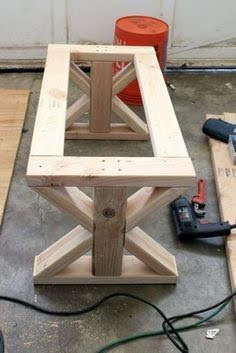Are you a woodworking enthusiast looking to master the art of calculating compound angles? In this article, we’ll provide you with a comprehensive guide on how to calculate compound angles in woodworking. Whether you’re a beginner or an experienced woodworker, understanding and accurately measuring compound angles is essential for creating precise and professional-looking wood projects.
Compound angles can be intimidating for many woodworkers, but with the right tools and knowledge, you can easily master this technique. In this section, we’ll introduce you to the concept of compound angles in woodworking and provide an overview of what you can expect to learn in the subsequent sections.
We’ll cover everything from the basics of compound angles to practical applications and advanced techniques for calculating complex compound angles, so you can take your woodworking skills to the next level.
Understanding the basics of compound angles is crucial for anyone working on woodworking projects that require precision and attention to detail. The ability to accurately calculate these angles will not only improve the quality of your work but also expand your capabilities as a woodworker.
Additionally, we’ll discuss the tools and materials needed for calculating compound angles, so you can ensure that you have everything necessary to tackle any woodworking project with confidence. So, let’s dive in and explore how you can become proficient in calculating compound angles for your woodworking endeavors.
Understanding the Basics of Compound Angles
When it comes to woodworking, understanding the basics of compound angles is essential for creating complex and visually appealing designs. Compound angles occur when two or more angles are combined to create a single angle, commonly found in projects such as furniture, decks, and cabinetry. These angles can be challenging to calculate, but with the right knowledge and tools, it can be done accurately.
What Are Compound Angles?
Compound angles occur when the two planes intersect at an angle other than 90 degrees, resulting in a joint that is not perpendicular. This often occurs in woodworking projects where pieces need to fit together at non-standard angles. Understanding how these angles work is crucial for ensuring a precise fit and professional finish in your woodworking projects.
How to Calculate Compound Angles in Woodworking
To calculate compound angles in woodworking, you will need to have a good grasp of basic geometry principles and the proper tools. Using trigonometric functions such as sine, cosine, and tangent can help you accurately determine the measurements needed for your compound angle cuts. It’s also important to have the right measuring tools such as a protractor, bevel gauge, or combination square to ensure precision in your calculations.
Utilizing Trigonometry for Compound Angle Calculations
Understanding how trigonometry applies to compound angle calculations is crucial for accuracy in woodworking projects. By using trigonometric functions and formulas, woodworkers can determine the exact measurements needed for compound angle cuts. Whether it’s calculating miter cuts for crown molding or creating beveled edges on furniture pieces, having a strong foundation in trigonometry will greatly benefit woodworkers looking to master compound angle calculations.
Tools and Materials Needed for Calculating Compound Angles
When it comes to woodworking, calculating compound angles requires specific tools and materials to ensure precision and accuracy in your projects. Without the right equipment, achieving the desired results can be a challenging task. In this section, we will discuss the essential tools and materials needed for accurately measuring and calculating compound angles in woodworking.
One of the most important tools you’ll need for calculating compound angles is a good quality protractor or angle finder. These tools are essential for accurately measuring the individual angles that make up the compound angle. A digital angle gauge can also be helpful in obtaining precise measurements, especially for complex angles.
In addition to angle measuring tools, having a reliable and accurate tape measure is crucial for taking length measurements required for calculating compound angles. A combination square or T-bevel is also necessary for transferring and replicating angles onto your workpiece. Lastly, having a sharp pencil or marking knife will allow you to mark your measurements accurately on the wood.
By ensuring you have these essential tools at your disposal, you can effectively calculate and measure compound angles with confidence in your woodworking projects. Understanding how to use these tools in conjunction with one another is key to achieving accurate results when working with compound angles in woodworking projects.
Step-by-Step Guide on How to Measure and Calculate Compound Angles
When it comes to woodworking, calculating compound angles can be a challenging task. However, with the right tools and knowledge, it is definitely achievable. Here’s a step-by-step guide on how to measure and calculate compound angles in your woodworking projects:
1. Determine the Angles: The first step in calculating compound angles is to determine the individual angles that make up the compound angle. Use a protractor or angle gauge to measure each angle separately.
2. Calculate the Compound Angle: Once you have determined the individual angles, it’s time to calculate the compound angle. This can be done using trigonometric functions such as sine, cosine, and tangent. You can also use online calculators or apps specifically designed for calculating compound angles.
3. Mark and Cut: After you have calculated the compound angle, mark your measurements on your wood piece using a pencil or marking gauge. Use a miter saw or table saw to make precise cuts according to your calculations.
4. Test Fit: Always test fit your angled cuts before assembling your woodworking project to ensure that everything aligns correctly and at the desired angle.
By following these steps, you can accurately measure and calculate compound angles for your woodworking projects.
Remember that accuracy is key when working with compound angles, so take your time and double-check your measurements before making any cuts.
Overall, mastering how to calculate compound angles in woodworking will greatly expand your capabilities as a woodworker and allow you to take on more complex projects with confidence.
Tips for Ensuring Accuracy in Compound Angle Calculations
When working with compound angles in woodworking, accuracy is crucial to the success of a project. Even a small miscalculation can result in gaps, uneven joints, or misaligned pieces. To ensure precision in your compound angle calculations, here are some tips to keep in mind.
First and foremost, it’s essential to use the right tools for the job. A high-quality protractor, bevel gauge, and combination square are indispensable for accurately measuring and marking compound angles. Investing in precise measuring tools will make a significant difference in the overall outcome of your woodworking projects.
Additionally, taking the time to double-check your measurements before making any cuts is key to achieving accuracy. Measure twice, cut once is a well-known adage in woodworking for good reason. It’s also helpful to label each angle and its corresponding measurement to avoid confusion during the cutting and assembly process.
Another important tip for ensuring accuracy in compound angle calculations is to perform test cuts or dry fits whenever possible. This allows you to verify that your measurements are correct before committing to the final cuts. Making adjustments at this stage is much easier than trying to rectify errors after everything has been assembled.
Finally, always remember that practice makes perfect when it comes to calculating compound angles in woodworking. The more you work with these types of cuts, the more intuitive the process will become. Don’t be discouraged by initial challenges – with persistence and attention to detail, mastering compound angles is well within reach.
| Tips | Details |
|---|---|
| Use high-quality tools | Invest in precise measuring tools such as protractors, bevel gauges, and combination squares. |
| Double-check measurements | Measure twice and label each angle and its corresponding measurement. |
| Perform test cuts or dry fits | Verify measurements by testing them before committing to final cuts. |
Common Mistakes to Avoid When Calculating Compound Angles
When working with compound angles in woodworking, it’s important to be aware of the common mistakes that many beginners make when calculating these angles. By understanding and avoiding these errors, you can ensure that your woodworking projects turn out accurately and without any unnecessary frustration.
One common mistake to avoid when calculating compound angles is forgetting to account for the bevel angle of the saw. When measuring and cutting compound angles, it’s essential to consider not only the miter angle but also the bevel angle of the saw blade. Failure to do so can result in inaccurate cuts that don’t fit together properly.
Another mistake to avoid is relying solely on measurements without testing the angles first. Even if you’ve calculated the compound angles correctly, it’s always a good idea to make test cuts on scrap wood before cutting into your actual project materials. This allows you to confirm that the angles are correct and make any necessary adjustments before committing to the final cuts.
Additionally, overlooking wood movement and grain direction when calculating compound angles can lead to mistakes in your woodworking projects. Different types of wood have varying degrees of movement due to changes in humidity and temperature, so it’s crucial to take this into account when planning and cutting compound angles.
| Common Mistakes | How to Avoid |
|---|---|
| Forgetting bevel angle | Account for both miter and bevel |
| Relying only on measurements | Make test cuts on scrap wood |
| Ignoring wood movement and grain direction | Consider wood type and grain direction in calculations |
By being mindful of these common mistakes and taking proactive measures to avoid them, you can improve your accuracy when calculating compound angles in woodworking projects. With practice and attention to detail, you can master the art of working with compound angles and achieve professional results in your woodworking endeavors.
Practical Applications of Compound Angles in Woodworking Projects
Once you have mastered the art of calculating compound angles in woodworking, you can start to see the practical applications of this skill in various woodworking projects. One common application is when constructing furniture with tapered legs, such as tables or chairs. The ability to accurately calculate compound angles allows for the creation of aesthetically pleasing and sturdy tapered legs that add a touch of elegance to the finished piece.
Another practical application of compound angles in woodworking projects is seen in the construction of complex joinery. Whether it’s creating dovetail joints or mitered corners, understanding how to calculate compound angles is crucial for achieving precise and seamless connections between individual pieces of wood. This not only enhances the structural integrity of the project but also elevates its overall visual appeal.
Additionally, compound angles come into play when building items with curved surfaces, such as arches or rounded table edges. Being able to accurately measure and calculate these angles ensures that each piece fits together seamlessly, resulting in a well-crafted and polished final product. This skill opens up a world of design possibilities for woodworkers looking to push the boundaries of traditional woodworking techniques.
Overall, mastering the calculation of compound angles in woodworking opens up a whole new realm of possibilities for woodworkers, allowing them to tackle more complex and visually striking projects with confidence and precision.
Advanced Techniques for Calculating Complex Compound Angles
Calculating compound angles in woodworking can become more complex as the projects become more intricate. While the basic techniques provide a strong foundation, there are advanced methods that can be employed to accurately calculate complex compound angles.
One advanced technique involves the use of trigonometric functions such as sine, cosine, and tangent to calculate the angles. By understanding these functions and how they relate to the sides and angles of triangles, woodworkers can accurately determine the compound angles needed for their project.
Another advanced method is the use of digital angle finders or protractors with multiple arms. These tools allow woodworkers to measure and calculate angles in three dimensions, making it easier to determine compound angles on non-standard surfaces or irregular shapes. By utilizing these advanced tools and techniques, woodworkers can ensure accuracy and precision in their calculations, leading to high-quality finished products.
It’s important to remember that while these advanced techniques can be incredibly helpful, they require a solid understanding of basic geometry and trigonometry. Woodworkers should take time to study and practice using these methods before attempting complex compound angle calculations on their woodworking projects. By mastering these advanced techniques, woodworkerscan confidently tackle even the most intricate compound angle calculations in their woodworking projects.
Conclusion
In conclusion, mastering the art of calculating compound angles in woodworking is a valuable skill for any woodworker. Understanding the basics of compound angles, having the right tools and materials, and following a step-by-step guide are essential for accurate calculations. By applying tips for ensuring accuracy and avoiding common mistakes, woodworkers can take their projects to the next level.
Practical applications of compound angles in woodworking projects are numerous. From creating unique furniture pieces to intricate designs, knowing how to calculate compound angles opens up a world of possibilities for woodworkers. Whether it’s crafting complex joints or adding flair to a project, mastering this skill can truly elevate the quality of workmanship.
For those looking to go beyond the basics, advanced techniques for calculating complex compound angles further expand the capabilities of woodworking. With dedication and practice, woodworkers can confidently take on more challenging projects with precision and confidence. By continually honing their skills in this area, woodworkers can set themselves apart and tackle even the most intricate designs with ease.
Overall, learning how to calculate compound angles in woodworking is an investment that pays off in the form of enhanced creativity and craftsmanship. It unlocks doors to a world of possibilities and allows woodworkers to push their boundaries, ultimately leading to more refined and impressive work. Mastering this skill is not only rewarding but also sets individuals apart as skilled artisans in the craft of woodworking.
Frequently Asked Questions
What Is the Formula for a Compound Angle?
The formula for a compound angle involves using trigonometric functions to calculate the angles formed by two intersecting planes. It takes into account both the horizontal and vertical angles to determine the overall measurement.
What Are the Compound Angles for Woodworking?
In woodworking, compound angles are often used when joining pieces of wood at non-standard angles, such as in crown molding or complex furniture designs. These angles require careful calculation and precise cutting to ensure a proper fit.
How Do You Calculate Compound Miter?
To calculate a compound miter for woodworking, you need to consider both the bevel angle (tilting the saw blade) and the miter angle (tilting the material). By using trigonometric functions and accurate measurements, woodworkers can determine the correct settings for their miter saw to make precise cuts for compound angles.

Hi everyone! I’m a woodworker and blogger, and this is my woodworking blog. In my blog, I share tips and tricks for woodworkers of all skill levels, as well as project ideas that you can try yourself.





